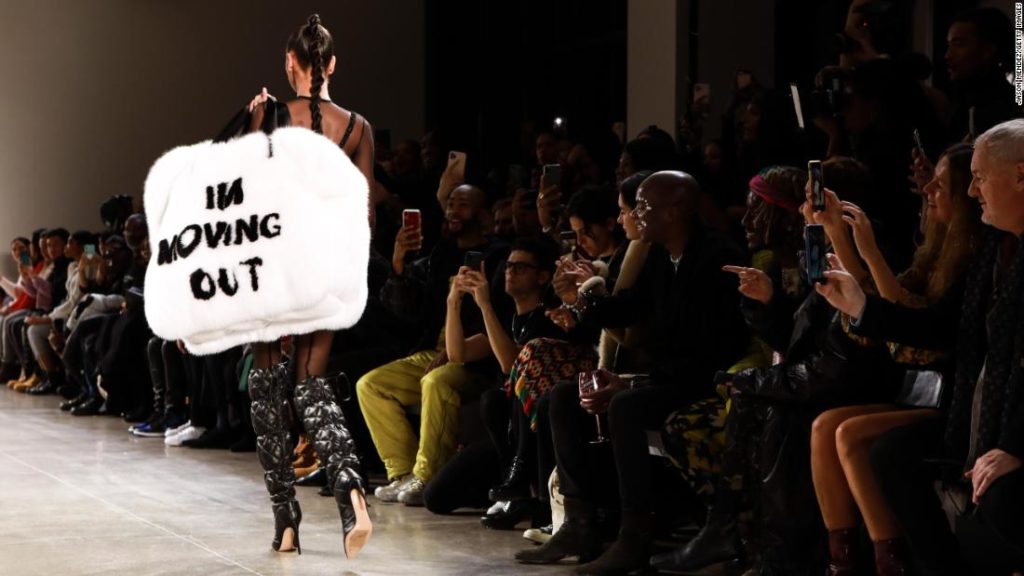When the Council of Fashion Designers of America (CFDA) chairman Tom Ford announced earlier this year that the organization would no longer publish an official New York Fashion Week schedule but rather an “American Collections Calendar,” the news confirmed something bigger than an administrative update.
New York Fashion Week was once the main stage for American designers, but this notion has been unbuckling for years as a number of designers have chosen to show elsewhere or outside of the official calendar dates.
The coronavirus pandemic only accentuated this trend. Travel bans and other logistical and health and safety challenges associated with large events have turned the idea of a fashion week in any city into a fairly loose concept, with many designers opting for short films or other creative presentations in place of live shows.
New York Fashion Week, which began on Sunday, will be almost entirely digital again and will not feature a number of high-profile designers whose shows once held prime spots on the schedule: Ralph Lauren, Marc Jacobs, Michael Kors and Calvin Klein are all absent, with future plans mostly under wraps or vague.
Releated video: The politics behind fashion’s front row
A growing trend

Jennifer Lopez at the Tom Ford show in Los Angeles in February, 2020. Credit: Tom Ford
Steven Kolb, the CFDA’s CEO, acknowledged this growing trend in a phone interview last week. “(Pre-pandemic), as the fashion industry became more global, we started to see some American fashion brands wanting to show outside of New York,” he said.
According to Kolb, these moves were often linked to strategic decisions aimed at growing in a new market, or linking up with the opening of a new store in a different city. But when the pandemic hit, the prospect of showing on the official calendar last September became daunting to some brands that, due to production and cash flow issues, were struggling to produce collections in time for the official schedule.
“It made sense to start thinking about it more broadly,” he explained. “It made sense to embrace those brands that were not part of the New York Fashion Week dates for this particular season.
But, according to Kolb, the changes do not signal the end of New York Fashion Week. Instead, he sees it as a possible opportunity for American fashion on a global stage.
“We would never dismiss the value of a fashion week in a city (and) what that does for the city’s economy — what that means culturally for that city,” he said. “So it’s important for us as we’re talking about the American Collection’s Calendar — this broad, embracing schedule of American designers — that we always highlight and emphasize fashion week, because the validity around that is still important.”
Fashion week and beyond
The new American Collections Calendar features a handful of days of mostly virtual shows this week, but it also includes designers who will present collections as late as mid-April.
Zimmerman, a label founded by Australian sisters Nicky and Simone Zimmermann, will be presented from Sydney on Thursday. The label had been showing in New York since 2013 but returned home last season.

Model Coco Rocha takes a dip during the Christian Siriano in Connecticut in September, 2020. Credit: Mike Coppola/Getty Images for Christian Siriano
Jason Wu, one of the few designers to put on a physical runway show so far this year, presented his collection in New York on Sunday night. Models wove their way through perfectly arranged stacks of produce and flowers at “Mr. Wu’s General Store,” during a socially distant event that was also live streamed.

Designer Jason Wu poses with models at his latest show in New York on February 14, 2021. Credit: Jamie McCarthy/Getty Images for NYFW: The Shows
It’s been a year since the first bottles of hand sanitizer were distributed at fashion shows as the reality of the worsening pandemic became more clear. And the ongoing health crisis will continue to disrupt plans across all major fashion weeks in New York, London, Milan and Paris this season as designers face challenges they have come to know all too well.
But some of the pandemic-enforced changes within the fashion week system seen in the last year will be permanent. Kolb believes a lot of the work done to digitize fashion weeks will not be left behind in a post-pandemic world. The CFDA’s virtual home for fashion week, Runway360, will continue to be relevant to the council even when live attendance comes back.
“Digital platforms will live in parallel next to the live shows,” Kolb said.
Top image: A shot from the LaQuan Smith fashion show in New York in February last year.
This article was updated to correct the name of the new American Collections Calendar.
You may also like
-
Afghanistan: Civilian casualties hit record high amid US withdrawal, UN says
-
How Taiwan is trying to defend against a cyber ‘World War III’
-
Pandemic travel news this week: Quarantine escapes and airplane disguises
-
Why would anyone trust Brexit Britain again?
-
Black fungus: A second crisis is killing survivors of India’s worst Covid wave

